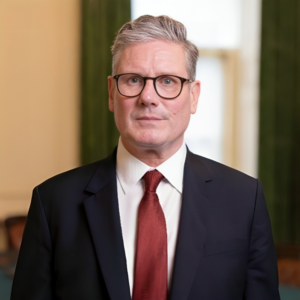
Decoding ESG Impact in Recent US Bank Failures
Banks could fail if don’t pay attention to economic warnings just to follow green agenda instead of focusing on finances.

Silicon Valley Bank cared a lot about eco-friendly money but didn’t watch over its deposits carefully. This caused a big problem & added to historic bank troubles in America.
Banks face a big problem if they quickly stop investing in things like fossil fuels due to political pressure. This can be bad for their own business, investors, and even the whole American economy.
This year, Silicon Valley Bank (SVB), Silvergate, Signature Bank, and more recently, First Republic, all failed in a big way. They all shared the same issue: they focused too much on environmental, social, and governance (ESG) factors in how they ran the bank.
Trying too hard to reach or beat their ESG goals led to their collapse because they ignored more important economic concerns.
How ESG Contributes to Bank Failure
The failure of SVB earlier this year was a big deal—it was the second-largest banking collapse in American history, surpassed only by the 2008 collapse of Washington Mutual during a global financial crisis. SVB, once the 14th-largest bank globally, managed $209 billion at its peak.
SVB’s leadership made some serious mistakes. They mishandled how much money the bank could lend, ignored worries about financial problems, and didn’t diversify their clients. What made things even worse was their strong focus on politically motivated approach to ESG investing.
Specifically, SVB and other banks followed a strategy called “phasing” in ESG investing. This involves getting rid of or gradually replacing traditional energy sources like oil and gas in investments and bringing in new, untested renewable energy options.
SVB concentrated on shifting to renewable fuels and sustainable lending, excluding any involvement with fossil fuels, as stated in their Task Force on Climate-Related Disclosures report.
However, SVB didn’t take smart steps to protect deposits when faced with rising inflation. Instead, they mostly borrowed from the Treasury to fund their sustainability projects.
As the Federal Reserve increased interest rates, SVB’s Treasury bonds lost value, making it hard for the bank to keep enough cash in reserve to hold onto deposits. This left SVB unable to support its net-zero-carbon initiatives and green-based lending.
These investments didn’t bring in enough money, and customers withdrew their funds long before SVB could achieve its ESG goals. The bank ended up with billions of dollars in losses that they couldn’t recover.
SVB Made Key Mistakes
SVB could have avoided many of its financial problems. Firstly, the bank wasn’t diverse enough. It focused solely on high-tech companies and wealthy depositors, with deposits often exceeding the FDIC-insured limit of $250,000.
SVB heavily lent to venture capitalists funding high-tech startups, making it a top choice for half of all such firms at its peak.
This focus, influenced by its Silicon Valley location, left SVB vulnerable when signs of financial trouble appeared.
ESG financing added to the issue. Over the past decade, SVB aimed for “sustainable innovation,” planning to provide $5 billion in loans and investments to businesses advancing sustainable technologies by 2027. Instead of diversifying its customer base and loan options, SVB fixated on sustainable lending goals.
By concentrating on risky venture capital startups, SVB set itself up for a bank run when signs of insolvency surfaced. The singular focus on sustainable financing worsened its ability to support depositors as interest rates rose.
SVB’s borrowing strategy was also flawed. It heavily relied on Treasury bills and mortgage-backed securities, assuming they were risk-free assets. Unlike traditional banks, SVB didn’t use investment capital as wisely.
It invested heavily, partly to fund its bold sustainable lending projects. SVB’s high-net-worth customers invested with the bank, which, in turn, invested in the Treasury to finance its ESG agenda. Both risky strategies backfired.
As a result, SVB’s heavy reliance on U.S. Treasury bonds and ESG finance made it unable to meet the demands of startup ventures. The risks from financing unproven green technologies couldn’t be balanced by SVB’s equally risky dependence on “safe” U.S.
Treasury bonds. ESG-aligned loans and mortgages often exceeded the total assets and revenue generated by SVB’s branches.
For perspective, SVB’s latest report shows that ESG spending was $9.1 billion more than SVB Capital’s total managed assets and $15.8 billion more than SVB Securities branch’s total revenue.
ESG spending was only $3.2 billion less than the total managed assets of SVB Private, the firm’s private banking and wealth management arm.
Promoting Sustainability, Denying Reality
Greg Becker, SVB’s former CEO, tried to shift blame for the bank’s collapse during his Senate testimony. He admitted being surprised by Silvergate’s liquidation, which triggered a bank run for similar institutions.
Instead of acknowledging SVB executives’ mistakes, Becker mostly blamed the crisis on social media hype.
Becker also claimed his team received mixed signals from financial regulators who said inflation was “transitory.” However, Senator Tim Scott and others pointed out that the Federal Reserve consistently raised interest rates before SVB’s collapse, signaling market troubles.
SVB’s Investment Banking arm worsened the situation. Focused on carbon neutrality, it clashed with the need for enduring financial gains from venture capital assets, which often rely on a variety of reliable securities.
SVB’s exclusive focus on renewables and environmental goals led to consistent losses for clients seeking rapid returns.
SVB’s board played a role in the bank’s ESG structure. They had ESG-related committees and an advisory committee overseeing strategic operations.
Despite internal mismanagement, financial regulators overlooked red flags like uninsured depositors, lack of cash reserves, and heavy reliance on devaluing Treasury bonds.
Media reporting, supportive of ESG investing, may have legitimised bad practices before regulators could act. Ironically, the ESG focus became a part of SVB’s bailout narrative, suggesting political favoritism due to environmental sympathies.
The Federal Reserve and U.S. Treasury seemed unaware of the financial collapses of ESG-friendly banks like SVB, despite numerous red flags.
Lessons Learned
Financial regulators and federal auditors should not overlook questionable investment schemes in pursuit of transitioning to sustainable energy sources.
It’s crucial for regulators to prioritise investor trust to prevent long-lasting financial damage to taxpayers in the event of bank failures. The resulting market volatility can diminish the value of government subsidy programs.
ESG phasing poses a real threat to the economy, hidden beneath the ongoing financial disasters. Proponents of ESG often ignore the substantial risks associated with transitioning to expensive and untested renewables.
Banks like SVB, Silvergate, and Signature expanded their environmental-themed investments while reducing fossil-fuel lending, despite a lack of corresponding shifts in market demand.
The institutional focus on ESG phasing did not align with the prevailing market conditions of rising interest rates and growing unease among depositors, leading to a mass exodus.
To prevent another significant bank collapse, financial actors must pay attention to broader warning signs in the economy, rather than prioritising a nonfinancial green agenda.
Never miss any important news. Subscribe to our newsletter.
Related News


British Investor Who Predicted US Slump Warns of Next Crash

I’m a Death Doula: 4 Reasons I Believe Death Isn’t the End


Tech to Reverse Climate Change & Revive Extinct Species

AI Unlocks the Brain’s Intelligence Pathways

XPENG Unveils Iron Robot with 60 Human-like Joints

Can AI Outsmart Humanity?

11 ChatGPT Prompts to Boost Your Personal Brand

Keir Starmer Hints at Possible Tax Hikes on Asset Income

Navigating the Future of AI: Insights from Eric Schmidt
